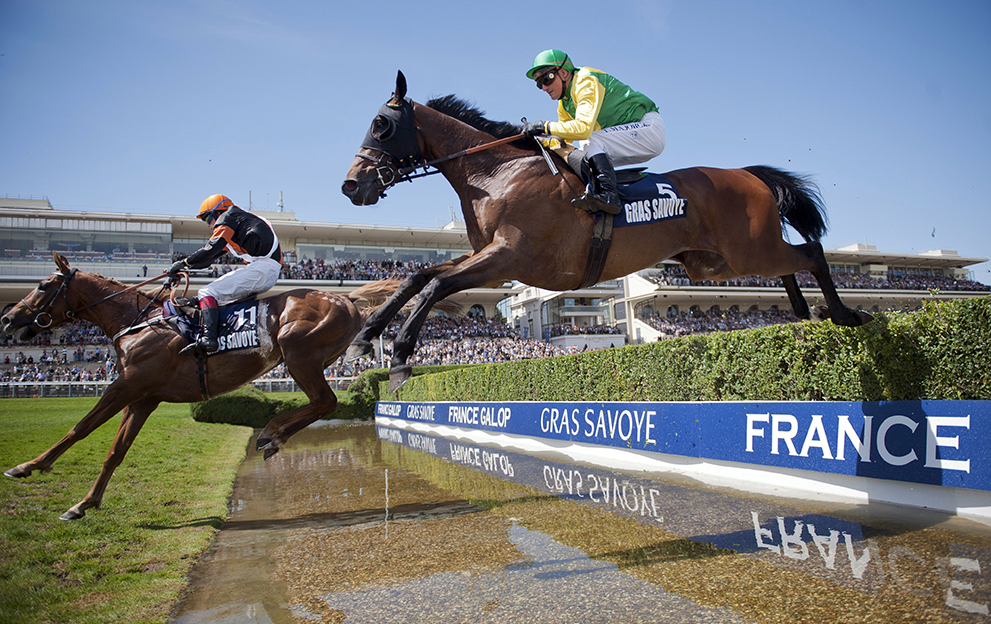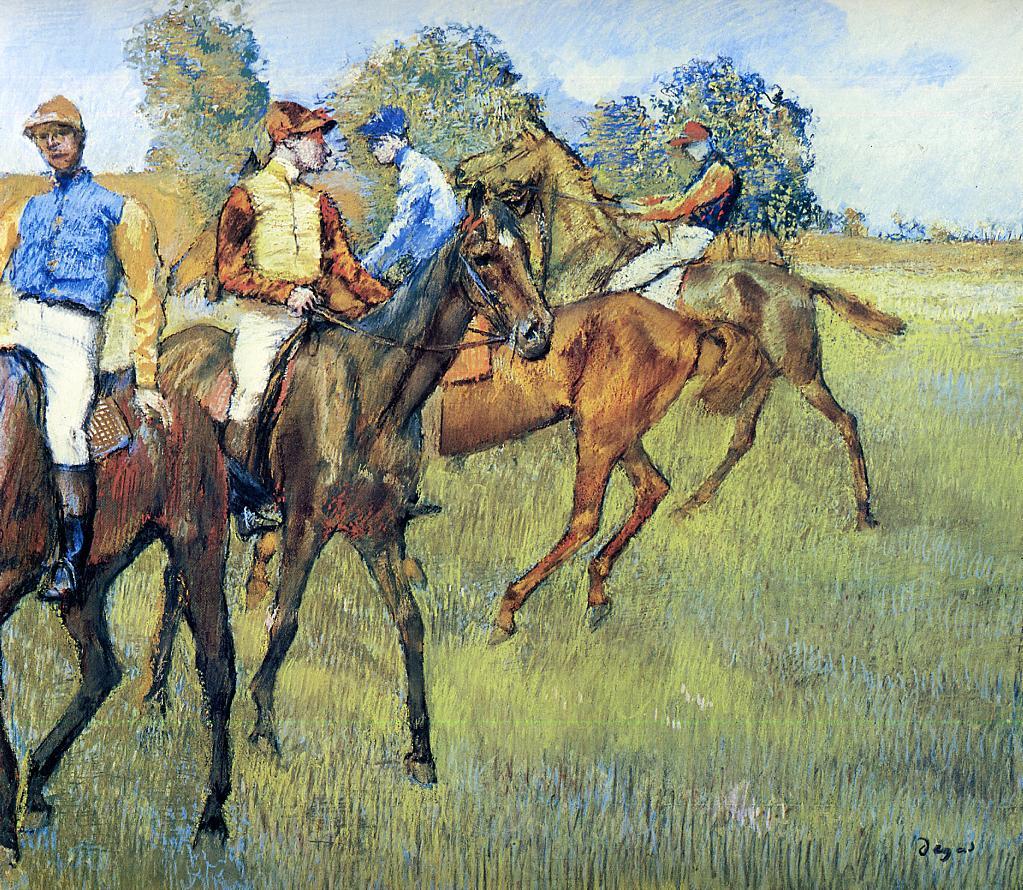Famous French Horse Race
Apr 2, 2016 - Explore Curt Hart's board 'Famous Harness Horses', followed by 227 people on Pinterest. See more ideas about horses, standardbred horse, harness racing. Charlestown Races: 750 Hollywood Drive, Charles Town, WV 25414 Mountaineer Race Track & Gaming Resort (MNR): P.O. Box 356 Chester, WV 26034: Wyoming Wyoming Horse Racing (Sweetwater Downs): 1601 Harrison Drive, Evanston, WY 82930. As trotting races began to be popular in the early 19 th century, most horses started being bred in France for this purpose. The French Trotter had been created by crossing the Norman stock horse, which has a muscular body stature, with the English thoroughbred, local half-bred, Norfolk Trotter as well as the American Standard bred stallions. Edgar Degas (France, 1834-1917) Degas is easily the most famous painter of racehorses. Different sizes from $286.99 Horse Racing of Sioux Indians near Fort Pierre, plate 30 from Volume 1 of 'Travels in the Interior of North America' 1843 by Karl Bodmer Different sizes from $286.99 Jockeys Before the Race, c.1878-79 by Edgar Degas.
The lists below show notable Thoroughbred horse races in various countries around the world. In countries with a grading system, the included races are normally Group or Grade 1. However, some restricted races such as the Queen's Plate in Canada are also included, and all races at the Royal Ascot festival are included because of their prestige.
Flat races[edit]
Famous French Women
Argentina
- Gran Premio Nacional (Argentine Derby)
- Gran Premio Polla de Potrancas (Argentine 1000 Guineas)
- Gran Premio Polla de Potrillos (Argentine 2000 Guineas)
- Gran Premio Seleccion (Argentine Oaks)
Australian
Austrian
- Trial Stakes
Barbados
Belgium
Brazil
- Grande Prêmio Cruzeiro do Sul (Brazilian Derby)
- Grande Prêmio Diana (Brazilian Oaks)
Famous French Artists Today
Canada
Chile
- Dos Mil Guineas (Chilean 2000 Guineas)
- El Derby (Chilean Derby)
- Clásico St. Leger (Chilean St.Leger)
Czech Republic
- Ceske Velka Jarni Cena (Ceske 2000 Guineas)
Denmark
France
- Poule d'Essai des Poulains (French 2000 Guineas)
- Poule d'Essai des Pouliches (French 1000 Guineas)
- Prix de Diane (French Oaks)
- Prix du Jockey Club (French Derby)
Germany
- Mehl-Mülhens-Rennen (German 2000 Guineas)
- Preis der Diana (German Oaks)
Hong Kong
Hungary
- Nemzeti dij (Hungarian 2000 Guineas)
Ireland
Italy
- Oaks d'Italia (Italian Oaks)
- Premio Parioli (Italian 2000 Guineas)
- Premio Regina Elena (Italian 1000 Guineas)
Japan
- Arima Kinen (Japanese winter Grand Prix)
- Kikuka Sho (Japanese St.Leger)
- Oka Sho (Japanese 1000 Guineas)
- Satsuki Sho (Japanese 2000 Guineas)
- Takarazuka Kinen (Japanese summer Grand Prix)
- Tokyo Yushun (Japanese Derby)
- Yushun Himba (Japanese Oaks)
Mauritius
New Zealand
Norway
Pakistan
- Quaid-e-Azam Gold Cup
- Pakistan Derby
- New Year Cup
- 1000 Guineas of Pakistan
- 2000 Guineas of Pakistan
- Pakistan St. Ledger Cup
- Pakistan Oaks
- Anarkali cup
Philippines
- Gran Copa
- President's Gold Cup
Poland
- Nagroda Derby Half Blood Derby (in English)
- Nagroda Rulera (Polish 2000 Guineas)
Russia

- Bolszoj Vserossijskij Priz (Russian Derby)
Singapore

Most Famous French Authors
Slovakia
- Slovenske Velka Jarna Cena (Slovenske 2000 Guineas)
South Africa
- Champions Cup
- S A Derby (South African Derby)
- The Annual Simonsberg Metropolitan
South Korea
Spain
- Premio Beamonte (Spanish Oaks)
- Premio Cimera (Spanish 2000 Guineas)
- Premio Valderas (Spanish 1000 Guineas)
- Premio Villamejor (Spanish St. Leger)
- Premio Villapadierna (Spanish Derby)
Famous French Horse Riders
Sweden
- Jockeyklubbens Jubileumslopning (Swedish 2000 Guineas)
Switzerland
Turkey
- Ankara Stakes (Turkish St. Leger)
- Dişi Tay Deneme (Turkish 1000 Guineas)
- Erkek Tay Deneme (Turkish 2000 Guineas)
- Gazi Derby (Turkish Derby)
- Kısrak (Turkish Oaks)
United Arab Emirates
United Kingdom
- Doncaster Cup (world's oldest race)
- Derby Stakes (aka Epsom Derby)
- Oaks Stakes (aka Epsom Oaks)
- Queen Elizabeth II Stakes (British Champions Mile)
- Royal Ascot:
- Day 1 (2015–Present):
- Day 2:
- Day 3:
- Day 4:
- Day 5:
- See also: List of British flat horse races
United States


- Breeders' Cup series:
- Day 1 (2013–present):
- Breeders' Cup Juvenile Sprint (discontinued)
- Breeders' Cup Marathon (discontinued)
- Breeders' Cup Distaff (known as the Breeders' Cup Ladies' Classic between 2008 and 2012)
- Day 2 (2013–present):
- Day 1 (2013–present):
- Donn Handicap (discontinued)
- Pegasus World Cup (effective replacement of Donn Handicap)
See also: Graded stakes race for a full list of Grade 1 races in the United States
Uruguay
Steeplechases[edit]
Australia
- Grand National Steeplechase
Belgium
Czech Republic
France
Famous French Artists
Ireland
Italy
Famous French Paintings
Japan
- Nakayama Grand Jump (Recap can be seen via JRA International Race Recap
New Zealand
- Great Northern Steeplechase
- Grand National Steeplechase
United Kingdom
Famous French Writers
United States
- Iroquois Steeplechase, Nashville, Tennessee
- Queens Cup Steeplechase held in Mineral Springs, North Carolina
See also[edit]
The French Trotter is a racing horse originated in the Normandy region of France around the 19th century. Known for its calm and gentle disposition, these horses have shown an exceptional gait along with strong determination and discipline.
French Trotter Horse Pictures
- Black French Trotter
- French Trotter Horse and Foal
- French Trotter Horse Images
- French Trotter Horse Pictures
- French Trotter Horse
- French Trotter Horses
- French Trotter Images
- French Trotter Pictures
- French Trotter Stallion
- French Trotter
Quick Information
| Other Names | Norman Trotter, Trotteur Francais |
| Temperament and Personality | Calm, well-behaved, submissive, easy-to-train |
| Physical Characteristics | Slightly large head, wide eyes, deep, broad chest, prominent breastbone, straight limbs, strong hooves, strong back and muscular quarters |
| Colors | Chestnut, brown, black, bay and gray (very rare) |
| Common Use | Racing, harness racing, driving |
| Weight | 500 kg to 650 kg |
| Height (Size) | 15 to 17 hands (60 to 65 inches; 152 to 165 cm) |
| Health | Healthy with no known breed-related problems, though owners should ensure a healthy living and regular vet checkup |
| Gaited | Maintains a diagonal two beat trotting gait |
| Popular Traits | Intelligence, endurance, agility and determination. |
| Feeding/Diet | Normally their diet includes grain and hay |
| Country of Origin | France |
| Ancestors | Norman stock horse, English Thoroughbred, American standardbred, and Hackney |
| Year/Time of Development | 19th century |
French Trotter Video:
History
As trotting races began to be popular in the early 19th century, most horses started being bred in France for this purpose. The French Trotter had been created by crossing the Norman stock horse, which has a muscular body stature, with the English thoroughbred, local half-bred, Norfolk Trotter as well as the American Standard bred stallions. Owing to the influence of the Old Norman horse in its development, it is even known as the Norman Trotter.
After being developed, the Trotters initially were heavy and coarse in appearance just like their Normandy ancestors. However, as the genes of the Thoroughbred horses were used to breed them, they attained a refined form. On the other hand, the genes of the standardbred horses were functional in helping them to maintain their speed, as they developed a trotting gait. In spite of having the genes of the American Standardbred horse, the French Trotter possesses a two-beat diagonal gait, rather than the lateral two-beat or pacing gait. Getting recognized officially in the year 1922, this is the most available breed in France in the recent times.
One of the famous French Trotters is Young Rattler, born in 1811 by crossing a thoroughbred rattler as well as a mare containing a higher amount of Norfolk Roadster genes. It is also responsible for contributing towards the modern breed of French Trotter. Thirty years after Rattler’s birth, certain thoroughbreds like Sir Quid Pigtail and the Heir of Linne began making their marks, increasing the population of French Trotters. Therefore, five significant bloodlines went on to be formed because of Normand and Conquerant (Sons of Young Rattler), Lavater (bred by Norfolk sire) and Fuchsia and Phaeton, both of whom were half-bred. Being foaled in 1883, Fuchsia, in turn, had fathered 400 trotters, with more than hundred of his sons were fathers of winning horses.
In 1937, the French Trotter Studbook had been closed to horses that were not of French breed in order to protect the qualities of the French trotter, which could give a tough competition to the world class harness racers.
Interesting Facts
- Known for its high energy level, the French Trotter may equal the galloping of a thoroughbred racing horse in terms of speed.
- It is used for a sport named ‘skijoring’, where this breed goes on to race on the snow pulling its rider on skis behind it.
- It has become a common practice to remove the shoe of French trotters before racing particularly for the purpose of increasing speed and improving its gait.